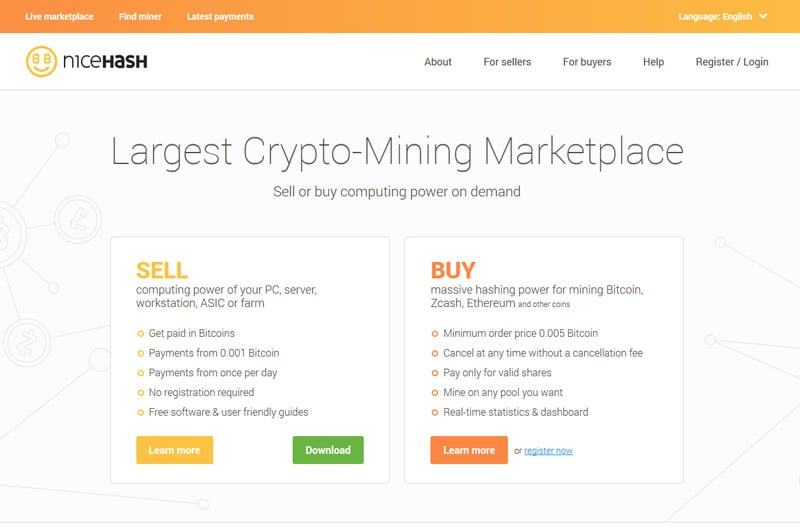How to Mine Ethereum: Complete Beginner’s Guide
Figuring out how to set up all the mining equipment for Ethereum can be a daunting task for someone without the technical expertise. With the market expanding, more and more people are looking to invest in Ethereum. What some people may not realize though is that you can also mine Ethereum to passively generate an income every month.

So how do you get involved with Ethereum Mining?
First you need a computer, or graphics card, that is capable of computing an algorithm that it attempts to solve in order to generate some Ether. For Ethereum, the ‘block’ that your video cards are attempting to find generates on average every 15 seconds. That means every 15 seconds, the Ethereum network pays to whomever found the block, 5 Ethereum (this value may change over time).
It should be noted that at some point in the future, Ethereum will be switching over to proof of stake with their Casper Fork which will mean it can no longer be mined.
Ethereum Miner Setup
There are currently many options for Ethereum Miners depending on the type of Video Card, the amount of video cards you want on one motherboard, and the power requirements.

The standard setup usually consists of:
- 6x Video Cards (Minimum 3GB, 4GB recommended)
- Best Hash/Price Recommendation: Radeon RX 570 4GB
- 6x Risers
- Highly recommend getting risers with all capacitors built in – version 006C
- Motherboard (with 6 PCI slots minimum for risers)
- Recommendations: Asus Z170-A, Biostar TB250
- CPU
- Memory
- Recommended: 4GB Crucial DDR4-2133
- Power Supply
- Minimum: 80% of maximum capacity
- Recommended: 1200W Corsair HX1200 or any other 1200W Gold or Platinum PSU
- SSD or Hard-Drive
- Miscellaneous
- Ethernet cable (do not run wifi), power button for motherboard, fans for cooling
With this setup, you’d find on average around 0.5Eth per month. This will change depending on the Ethereum Mining Difficulty, you can use the website WhatToMine to make calculations of your earnings or find other profitable coins to mine.
It is important to consider the difficulty to measure whether to continue mining Ethereum, or whether to switch to another algorithm or coin to mine.
Ethereum Mining Pool Setup
Unfortunately, for someone looking at building just a few mining rigs, they may never find a block solo-mining. Therefore it is necessary to join a mining pool. A mining pool combines the hashrate of all the miners, and vastly increases the chances that the group is able to find a block. This therefore allows you to get a steady payout from the pool, even if you yourself never find a block.
There are some choices for Ethereum mining pools which vary depending on how their overall hashrate, the fee structure, and payout structure.
NiceHash
The easiest and quickest to get involved in is NiceHash. The NiceHash miner will automatically choose the best algorithm to hash, whether that’s Ethereum or something else, which pays out in bitcoin. To use NiceHash, simply visit the site and download the AMD or nVidia installer depending on what video card you have (note: some antivirus software picks up mining software as malicious files).
Once installed, run the program and wait as the program will run a quick scan to detect your hardware and install software. Once this is complete, enter your bitcoin address in the top. This is important otherwise you will not get paid. Once you’ve inputted your bitcoin address, click on the benchmark button and start the scan. Once this is done you’re ready to start mining.
Payouts on Nicehash are minimum 0.1BTC four times per day. It’s also important to note that nicehash is approximately 20% less overall hashrate, but the switching feature may allow you to be more profitable than if you were to simply mine Ethereum.
Nanopool/Ethermine (Claymore Dual Miner)
Nanopool is the largest mining pool with around 130,000 active miners. Fee’s are 1% and they also payout uncle blocks. This means that if your miners were close to solving the algorithm that would have paid out the block, you’ll receive a bonus for that through nanopool.
Another choice for a mining pool would be Ethermine. They have around 75,000 active miners and have a 1% fee, and pay out uncle blocks.
Both Nanopool and Ethermine can run different software to hash for Ethereum. I recommend running Claymore Dual Miner which allows you to hash for both Ethereum, as well as an alternative currency. This is because Ethereum heavily relies on memory usage while the core processor sits idle. While dual mining, the memory of your video card will hash for Ethereum, and the core processor will hash for Decred or Siacoin as an example.
Nanopool now has a quick start that makes it very easy to download and setup the Claymore Dual Miner. On the Nanopool front page, click on ‘Quick Start’ under the Ethereum banner. Simply follow the steps to download and install Claymore’s Miner as well as setup your config file with the config generator.

Once the config file is dropped into the extracted file location, simply click the start.bat file and the miner will load up.

You may have to ensure you have the correct virtual memory enabled (minimum 16GB). To do this, search for system in the start menu. Open system and on the left hand side click ‘Advanced System Settings.’ Go under the advanced tab, under performance settings, and advanced again. Then click ‘Change’ under virtual memory. Uncheck the box that states to ‘Automatically manage paging file size for all drives’ and then input a custom size of 16384 (or whatever is the maximum allowable value) into the Initial and Maximum size fields. This will prevent you from having any errors with virtual memory.

Profits & Conclusion
Now that your miner is set up, you’re able to sit back and watch as your video cards gain you passive income every month in the form of Ethereum. It is important to consider any variable costs that you may incur during the mining to determine your profitability. Variable costs may be electrical costs, maintenance costs, pool fees, dev fees, exchange fees, etc.
At the time of writing this article, the aforementioned mining rig would cost around $2,250USD and would be capable of producing around 0.5 Ethereum per month. This is about $250 per month before variable costs. That means within 9 months you’ll have paid off your initial investment. This is of course assuming the price of Ethereum stays the same.

Therefore Ethereum mining is a good investment for people to get involved in as it reduces the risks from trading in a volatile market, and is a great way of generating passive income every month. In future articles we will also address the need for overclocking and undervolting your cards to increase efficiency.


eToro Risk Warning: 66% of retail investor accounts lose money when trading CFDs with this provider. You should consider whether you can afford to take the high risk of losing your money.
You have Successfully Subscribed!
Source: blockonomi.com
View original post







